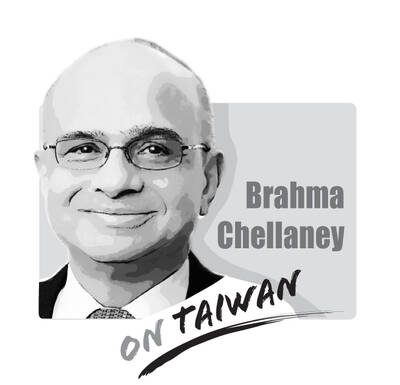When people negatively stereotype Taiwan, they tend to focus on one of two things: a reputation for making inexpensive, non-durable goods, or the brawls that often pass for legislative sessions.
Anyone familiar with Taiwan knows that this country offers its inhabitants and the world much more than just a place to buy cheap widgets or the punchline to a comic variety show.
"Made in Taiwan" was once synonymous with cheap plastic goods that would quickly fall apart. This perception is so entrenched that several years ago, even a major British company ran an advertising campaign around it, something to the effect of "You can either be a winner and buy our quality goods, or you can be a loser and buy Made in Taiwan crap."
Obviously, this was offensive and simplistic, and as many noted at the time, the advertisers had probably designed their ads on computers built in Taiwan. Irony will always have a place in the world.
But it has to be said that these two negative stereotypes are a reflection of two trends in this society that do exist, and are increasingly converging: nonchalance about quality, and bitter political partisanship.
Some people consider the cha bu duo (
The way to avoid the wrath of zealots and despots is to be low-key and not take absolute stands on anything: "If the military policemen want to stop me for no reason and question me, it will only make things worse if I get upset; so cha bu duo. Just take it on the chin and move along."
This works in certain scenarios, but is hopeless in others: No one would want their doctor to begin surgery like this: "Is this where the incision should go? Ah, well, cha bu duo, close enough."
So why are Taiwanese willing to accept this kind of haphazard jury-rigging when it comes to their system of government? There is nothing wrong with thinking, for instance, that the current president is an incompetent and corrupt fool. But it is another to attempt to oust him for these reasons by using non-legal means, as his opponents are doing now.
But in Taiwan's politicized society, there is neither black nor white, but only blue and green. Few people are worried about the deleterious long-term effects that creating an extra-legal precedent for ousting a democratically elected official will have on their system of government. And Taiwan's political leaders couldn't care less: they are all politicians, not leaders.
Whether our readers support the blues or the greens, they should be asking themselves a very serious question: Is a political victory worth dismantling the mechanisms of Taiwan's fragile democracy?
If the answer from most is anything but "no," then there is very little hope for the survival of the liberty that people in Taiwan now enjoy, nor for the kind of accountability that has made President Chen Shui-bian (

Taiwan stands at the epicenter of a seismic shift that will determine the Indo-Pacific’s future security architecture. Whether deterrence prevails or collapses will reverberate far beyond the Taiwan Strait, fundamentally reshaping global power dynamics. The stakes could not be higher. Today, Taipei confronts an unprecedented convergence of threats from an increasingly muscular China that has intensified its multidimensional pressure campaign. Beijing’s strategy is comprehensive: military intimidation, diplomatic isolation, economic coercion, and sophisticated influence operations designed to fracture Taiwan’s democratic society from within. This challenge is magnified by Taiwan’s internal political divisions, which extend to fundamental questions about the island’s identity and future
The narrative surrounding Indian Prime Minister Narendra Modi’s attendance at last week’s Shanghai Cooperation Organization (SCO) summit — where he held hands with Russian President Vladimir Putin and chatted amiably with Chinese President Xi Jinping (習近平) — was widely framed as a signal of Modi distancing himself from the US and edging closer to regional autocrats. It was depicted as Modi reacting to the levying of high US tariffs, burying the hatchet over border disputes with China, and heralding less engagement with the Quadrilateral Security dialogue (Quad) composed of the US, India, Japan and Australia. With Modi in China for the
The Chinese Nationalist Party (KMT) has postponed its chairperson candidate registration for two weeks, and so far, nine people have announced their intention to run for chairperson, the most on record, with more expected to announce their campaign in the final days. On the evening of Aug. 23, shortly after seven KMT lawmakers survived recall votes, KMT Chairman Eric Chu (朱立倫) announced he would step down and urged Taichung Mayor Lu Shiow-yen (盧秀燕) to step in and lead the party back to power. Lu immediately ruled herself out the following day, leaving the subject in question. In the days that followed, several
The Jamestown Foundation last week published an article exposing Beijing’s oil rigs and other potential dual-use platforms in waters near Pratas Island (Dongsha Island, 東沙島). China’s activities there resembled what they did in the East China Sea, inside the exclusive economic zones of Japan and South Korea, as well as with other South China Sea claimants. However, the most surprising element of the report was that the authors’ government contacts and Jamestown’s own evinced little awareness of China’s activities. That Beijing’s testing of Taiwanese (and its allies) situational awareness seemingly went unnoticed strongly suggests the need for more intelligence. Taiwan’s naval